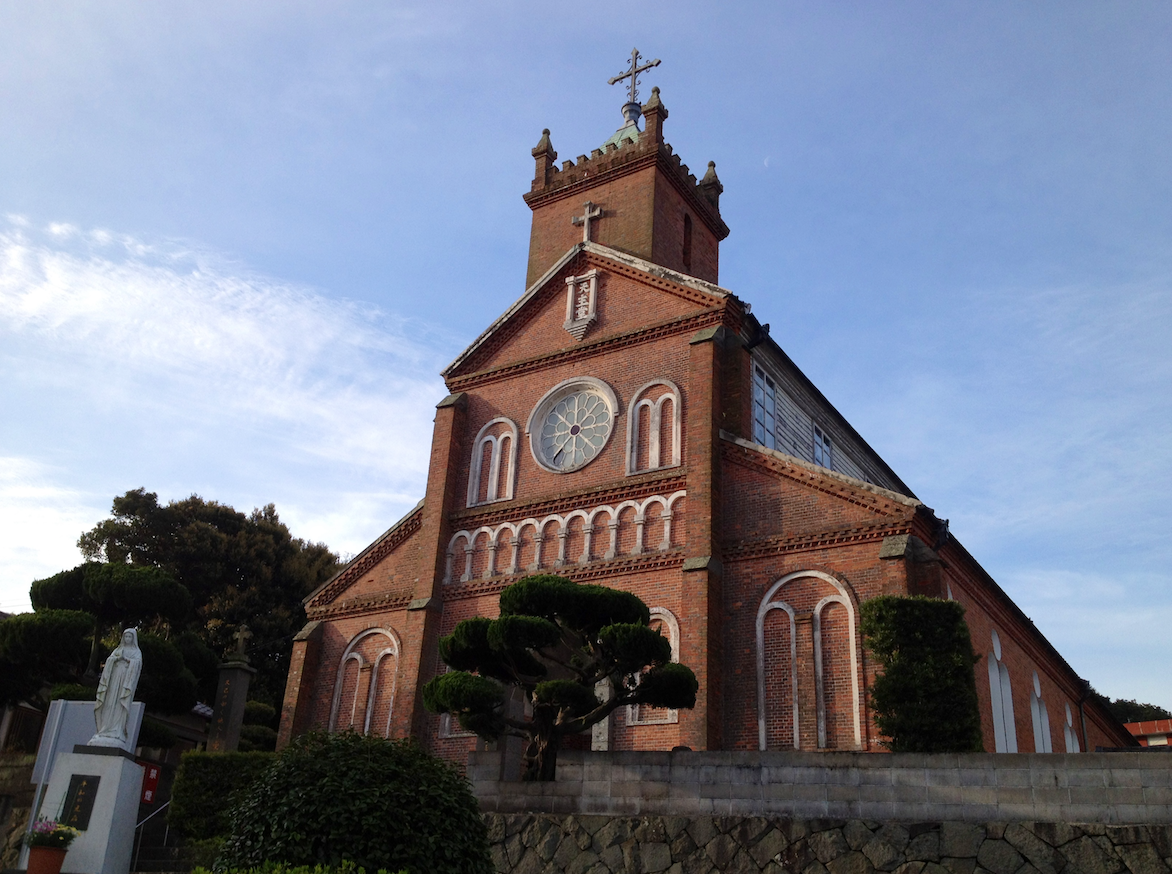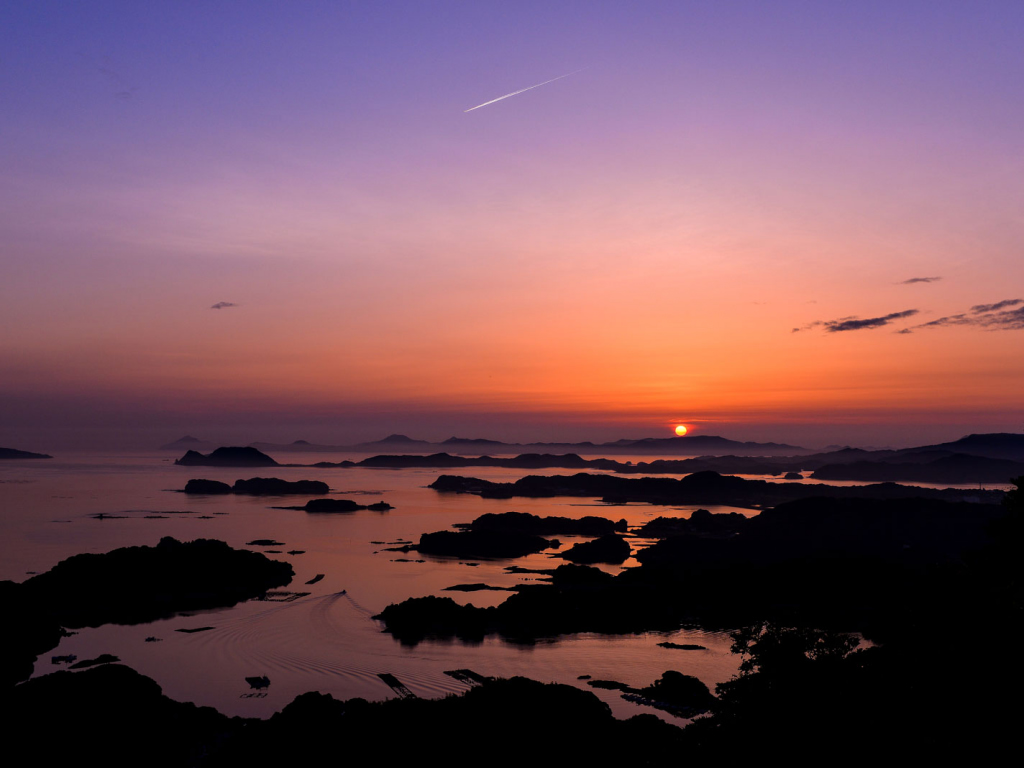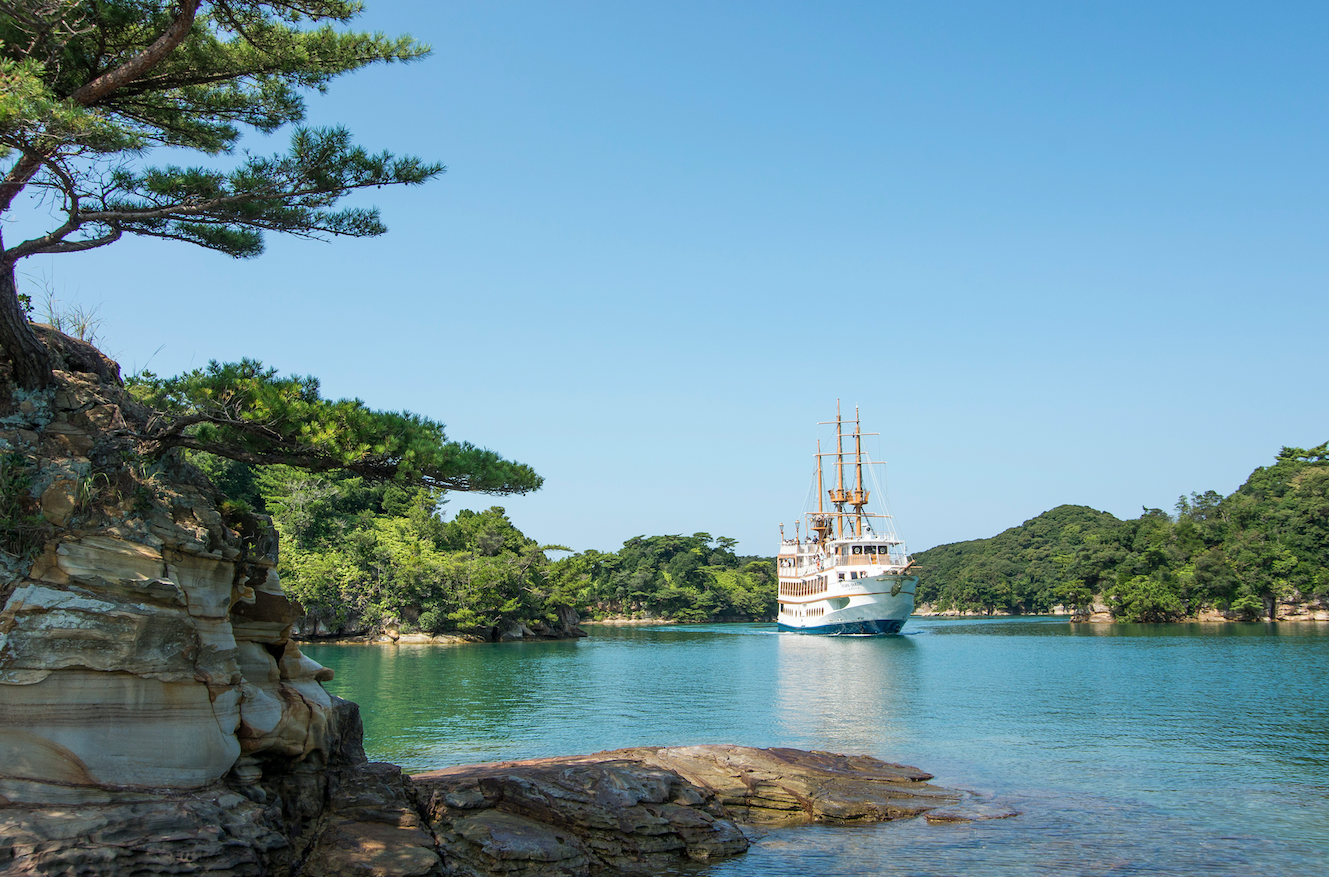Hundreds of verdant islands dotted across a bay of bright blue, shimmering waters as far as the eye can see… no, this isn’t some distant tropical paradise we’re talking about; it’s Kyushu’s Kujukushima, or the Kujuku Islands.
If they look familiar, you must be a film buff: shots of the bay were used as the opener for The Last Samurai. Located just off the coastline that stretches from Sasebo to Hirado and across part of the Saikai National Park, the scenery was deemed stunning enough for the Kujukushima to be admitted into the exclusive Most Beautiful Bays in the World Club in 2018. The name translates to “99 islands,” but in reality there are even more: a whopping 208 or so, with the nickname chosen to emphasize that there are almost too many to count.
Sea Creatures, Cruises and Cuisine
A good way to see what the area has to offer is by starting on the mainland. At Kujukushima Pearl Sea Resort, a leisurely 25-minute bus ride from Sasebo Station, you’ll find several observatories and an aquarium, plus multiple restaurants and shops. The aquarium houses 370 different types of marine life and over 16,000 individual creatures. That includes dolphins, horseshoe crabs and various species of jellyfish, which can be seen inside the special Jellyfish Symphony Dome. What also sets this place apart from the pack is their “hands-on corner,” where you can try to harvest your own pearls from local oysters. It makes for a fun couple of hours, especially if you have kids in tow.

To view the Kujukushima up close, you can either gaze at them from one of the observatories or hop on board one of the sea cruises, which all set sail from the resort. The Ishidake Observatory Garden in particular has some spectacular views at sunset. During this time, you can see the sun setting behind the 208 islands from the hilltop observatory, which has a 360-degree view. In the right conditions, the scenery before you takes on a special golden glow. Other viewing points include Tenkaiho with its spectacular panorama, the Yumiharidake for city night views, and the Funakoshi observatory, which is best if you prefer a closer look at the islands.
The sea cruises, on the other hand, give you a front-row seat for viewing the Kujukushima. The most popular option is to sail on the Pearl Queen excursion boat, or its sister, the Mirai, which was inspired by a pirate’s hat. Each boat spends around 50 minutes cruising the bay, with passengers being able to view the scenery from the large windows or deck. The Pearl Queen has barrier-free access, making it accessible for all.

If you prefer a more active trip around the islands, you can go sea kayaking from the Pearl Sea Resort. After a short introductory lecture, you’ll be able to paddle the waters at your own speed. Kayaking trips can be arranged on Sundays and holidays between April and October, but are available every day in the summer holidays. Alternatively, you can also try your hand at sailing a yacht, including steering it and learning how to operate the sails to catch the optimum amount of wind.
All that activity is bound to work up an appetite, and luckily the area delivers in this regard too. The bay is a native habitat for a wealth of seafood, including red snapper, blowfish and oysters. The oysters in particular are naturally sweet and full of flavor as a result of the rugged coastline. They’re so popular that there’s even an annual event, the Kujukushima Oyster Festival, dedicated to them. Enjoy them raw or as part of a meal at one of the Pearl Sea Resort’s restaurants, where you’ll have the added bonus of the islands as a backdrop. Those with a sweet tooth should try Kujukushima’s unique pearl ice cream.
A Rich History
The area isn’t just famous for its spectacular nature and food: it’s also noted as the site of a very specific chapter in Japanese history. Portuguese missionaries washed up ashore in Kyushu virtually by accident in the late 16th century and set about trying to convert the Japanese to Catholicism. Their practices were first begrudgingly tolerated, then looked upon with suspicion, until eventually, in the 17th century, Christianity was banned outright in Japan by the shogunate’s order. As a result, those who had converted went into hiding. They came to be known as “kakure kirishitan,” or hidden Christians, and some of them actually hid on one of Kujukushima’s main islands, Kuroshima, after the Shimabara Rebellion in 1637, which saw them revolt against the government over raising taxes.
Most of the island’s population today is descendant from those survivors. In 1902, with the ban on Christianity lifted, the parishioners built Kuroshima Church. To keep costs down, they used local materials such as granite from the island and tiles from nearby Arita, with only the stained glass and holy artifacts brought in from abroad. One of the few brick churches in the country, it’s a stunning example of architecture imbued with deep history. Hence it’s unsurprising that the church was named an Important Cultural Property in 1998 and is currently being renovated to reinforce the building against Japan’s heavy seismic activity. It will be reopened in March 2020.

To get to Kuroshima, it’s easiest to take a ferry from the harbor in Sasebo, a city worthy of a visit in its own right. Nowadays, Sasebo is perhaps most famous for Huis ten Bosch, the famous Dutch-themed amusement park located within the city limits – but there’s more to it than that. Boasting a natural harbor, Sasebo started out as a small fishing village but evolved into a city proper after an Imperial Japanese Navy base was established here at the start of the Meiji era.
After World War II, the American forces were stationed at Sasebo for several years as well. Although they may have left, the mix of cultures and naval themes continues to this day, with some of the architectural highlights including the Former Sasebo Naval District Triumph Memorial Hall, and Sasebo Park, which used to be a training ground for the navy. After all that, you can wind down at the Foreign Bar Street, or dig into the city’s signature Sasebo burger, which is made solely using local ingredients.
With stunning nature, cultural heritage and gastronomy all in one area, it’s an easy choice to spend a day or two soaking up Kujukushima and Sasebo’s atmosphere. Go island-hopping, eat local delicacies, or explore the history: there’s little chance of getting bored here. And if you do need a break, you can simply turn and gaze out across the bay — the only reminder you need that the Kujukushima area truly is one of the most stunning in the world.









